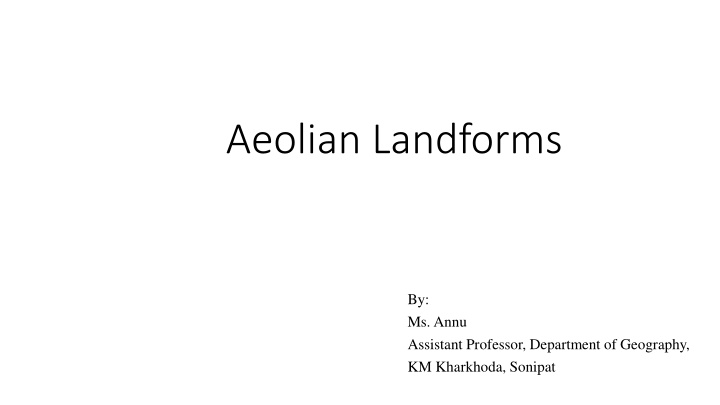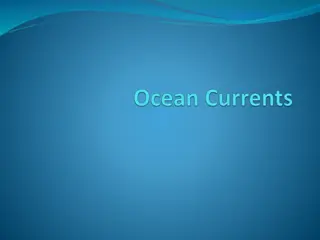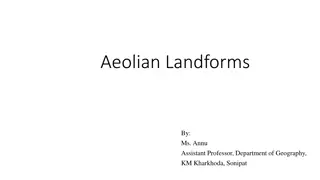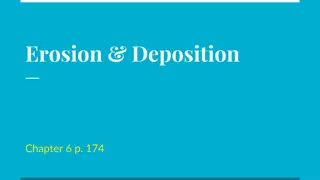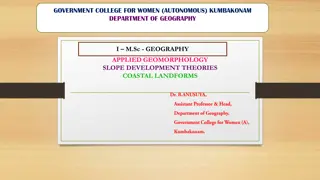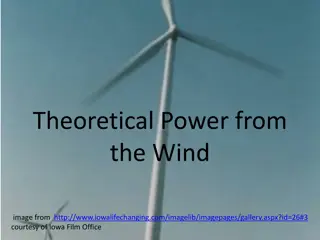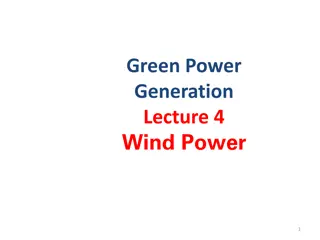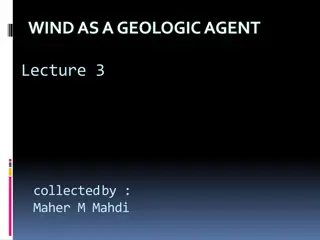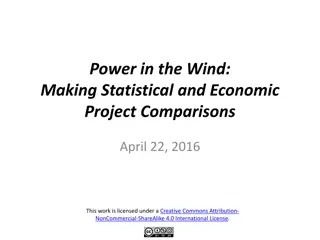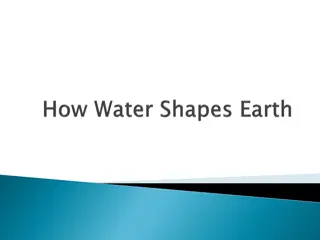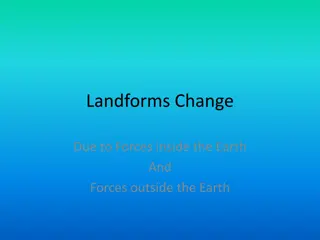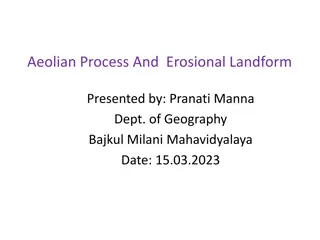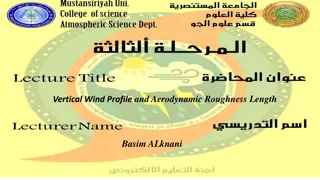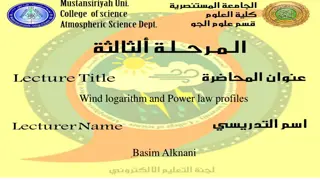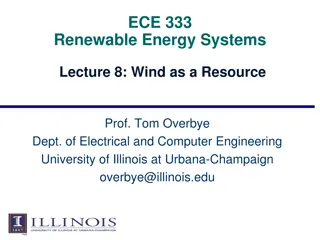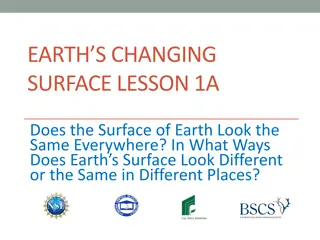Aeolian Landforms: Shaping Earth's Surface Through Wind Action
Geomorphic processes, including aeolian processes, play a significant role in modifying the earth's surface. This article delves into how wind erosion and deposition create unique landforms such as ventifacts and yardangs. Understanding the transportation methods and topographic effects of wind erosion helps in recognizing aeolian landforms in arid and semi-arid regions.
Download Presentation

Please find below an Image/Link to download the presentation.
The content on the website is provided AS IS for your information and personal use only. It may not be sold, licensed, or shared on other websites without obtaining consent from the author.If you encounter any issues during the download, it is possible that the publisher has removed the file from their server.
You are allowed to download the files provided on this website for personal or commercial use, subject to the condition that they are used lawfully. All files are the property of their respective owners.
The content on the website is provided AS IS for your information and personal use only. It may not be sold, licensed, or shared on other websites without obtaining consent from the author.
E N D
Presentation Transcript
Aeolian Landforms By: Ms. Annu Assistant Professor, Department of Geography, KM Kharkhoda, Sonipat
Introduction Geomorphic processes: All those physical and chemical changes which effect the modification of the earth surficial form. It is categorized into two processes: 1. Endogenetic 2. Exogenetic Geomorphic agent: Any natural medium which is capable of securing and transporting earth material. Examples: Running water, ground water, glacier, wind, waves, current, tides and tsunami. These agencies may be designated as mobile agents
Aeolian processes It refers specifically to the wind s ability to shape the surface of the earth. Winds may erode, transport and deposit materials. Aeolian processes are important in arid and semi arid environments such as deserts. TOPOGRAPHIC EFFECTS OF WIND EROSION Wind erosion manifests itself in three forms:- 1. Abrasion or corrasion: The wearing down of surfaces by the grinding action and sand blasting of windborne particles. 2. Deflation: The lifting and removal of loose, fine grained material from the earth surface. Forms shallow basins called deflation basins. 3. Attrition: Attrition is the grinding action, while on transit wind borne particles often collide with one another. Such mutual collision brings about a further grinding of the particles.
Transportation by Wind Three methods: 1. Saltation: Transported through a series of bounces. 2. Suspension: particles are lifted high into atmosphere and are carried great distances before they settle. 3. Rolling or Traction or Creep: the movement of particles on ground. The coarser fragments are carried in this way.
Aeolian Landforms Features of the earth s surface produced by either erosive or constructive action of the wind. Found in regions of the earth where erosion and deposition by wind are the dominant geomorphic forces shaping the face of the landscape. Aeolian sediments are often composed of well- rounded, sand to silt sized particles that are weathered by wind abrasion during transport. Sediments are deposited when: The velocity of the wind falls Obstruction to wind Increase in Load
Erosional Landforms 1. Ventifacts: Formed by abrasion effect. Exhibit one or more polished and faceted surfaces. They are relatively rare.
2. Yardang: Ridges that are sculpted and streamlined by wind abrasion and deflation. Elongated in the direction of prevailing wind and are nearly always carved from relatively weak materials.
3. Mushroom table or pedestal rock: A rock having broad upper and narrow base resembling an mushroom shape is called mushroom rocks, formed due to abrasive work of wind.
4. Desert Pavements or Lag Deposits: The left interlocking, angular or rounded rock fragments of pebble and cobble by wind deflation are known as lag deposits. A desert pavement is also called "reg" in western Sahara, "Serir" in Eastern Sahara, "Gibber" in Australia and "Sai" in Central Asia. behind closely packed,
5. Blowouts: Sandy depressions in a sand dune ecosystem caused by the removal of sediments by wind. Blowouts develop in areas where non- indurated materials lie beneath the land surface. 1 km field of view
Depositional Landforms 1. Wind or Sand Ripples: Miniature dunes within a dune (not more than 2 inches tall). May form from cross winds and appear to be traveling in a different direction than the large dune.
2. Loess: An aeolian sediment formed by the accumulation of typically in the 20-50micrometer size range. Buff-coloured, non-indurated, calcareous and permeable. They occur at variable altitudes and are readily recognized as Aeolian deposits. Loess is the raw material for many mollisols, the best agricultural soils. wind blown silt
3. Sand dunes: Piles of sand deposited by wind. Leeward side (slipface) has a steeper slope. Windward side is more gradual.
Different types of dunes Barchan : Crescent -shaped dune whose long axis is transverse to the dominant wind action.
Transverse Dunes : Long asymmetrical dunes that form perpendicular direction. Formed when the source of sand is elongated one and transverse to wind direction. Single long slipface. to wind
Parabolic Dunes : Crescent-shaped dune whose long axis is transverse to dominant wind direction. Convex in leeward side and concave in windward side. Multiple slip-faces.
Longitudinal/Seif Dunes : A large, elongated dune lying parallel to the prevailing wind direction. Longitudinal dunes usually have symmetrical cross sections. They generally form in areas that are located behind an obstacle where sand is abundant and the wind is constant and strong.
Star Dunes : Large pyramidal or star-shaped dune. Has three or more slip- faces. Does not migrate along the ground, but grows vertically.
Dome Dunes : Mound of sand that is circular or elliptical in shape. Has no slipfaces.
Reversing Dunes : Dunes between star and transverse dunes. Ridge is asymmetrical and has two slip-faces. that are intermediate
Coastal Dunes : Forms when there is a large supply of beach sand and strong winds blowing from sea to shore. Beach area must be wide. Dissimilar from desert dunes in their form and shape and in the fact that they do not migrate.
Conclusion Wind may erode, transport and deposit materials and are effective agents in regions with sparse vegetations. Deflation and abrasion are the two methods by which wind carries out its erosional activities on the earth's surface. Mushroom table, pedestal rock, yardang, ventifacts are important erosional features. Wind transportation takes place through suspension, saltation and creeping. Dunes, loess and sand ripples are the depositional features. Sand dunes form in environments that favors the deposition of sand. Eg. Barchans, transverse, parabolic and longitudinal etc.
